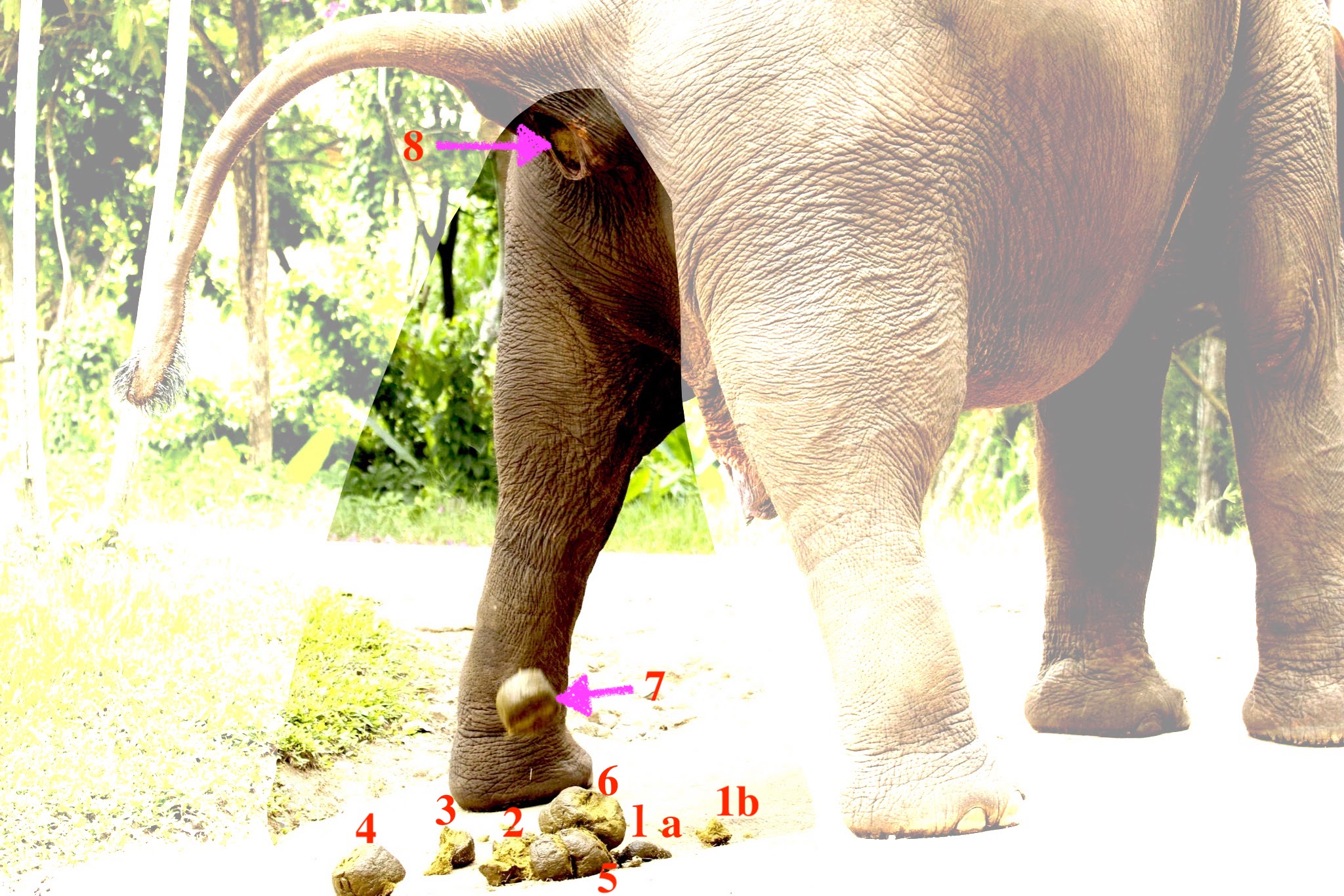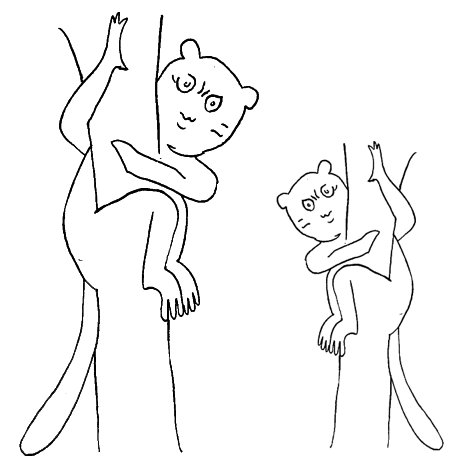
フーコー派による言説と言説分析
L'Archéologie
du savoir and
Discource Analysis

★哲学者ミシェル・フーコーの著作によれば、言説とは「言表(énoncés)であるという点 で、系列の実体、記号の実体」[13] である。
★言表 (l'énoncé、「言明」) とは、書き手と話し手が言葉に意味を付与し、言説の言表、対象、主体に対して、それらの間で、繰り返し可能な意味的関係を伝達することを可能にする言語構 成体である。
★言説の形成と いう用語は、言説を生み出す意味的関係を持つ書き言葉や話し言葉を特定し、記述するも のである(→「言説の秩序・ノート」)。
★研究者としての フーコーは、政治経済学や自然史などの大規模な知識体系の分析に言説形成を適用した[14]。 ミシェル・フーコーは、思考システム(「エピステーメー」)と知識(「言説的形成」)の方法論と歴史学に関する論文である『知の考古学』(1969年)に おいて、言説の概念を発展させた。社会学者イアラ・レッサは、フーコーの言説の定義を「主体やその主体が語る世界を体系的に構築する思想、態度、行動方 針、信念、実践からなる思考のシステム」と要約している[15]。
★フーコーは、現代の真理を構築し、その真理を維持し、構築された真理の間にどのような権
力関係が存在するかを決定する社会の権力の正当化における言説の役割を追跡している。 権
力と知識の相互関係は、あらゆる人間関係を権力交渉へと変容させる[16]。なぜなら権力は常に存在し、それによって真理を生み出し、制約するからであ
る[9]。権力は、人々がどのような主題について議論することができるのか、いつ、どこで、どのように発言することができるのか、どのような人物が発言を
許されるのかを決定する排除のルール(言説)を通じて行使される。 [13]
知識が権力の創造者であると同時に権力の創造者であることを示すために、フーコーは「権力/知識」という造語を作り、それが「個々の思想家が思想や知識を
発展させることを前提とするのではなく、何が知られるようになるかを決定する抽象的な力」であることを示した[17][18](→「知と権力」)。
★したがって、真理は、認識論的基準によってではなく、権力の戦略に依拠する。
★ インターディスコースは、言説が他の言説との関係において存在するように[14]、言説間の外的な意味的関係を研究している[19]。
【フーコーの知の考古学】
ミシェル・フーコーによる『知の考古学』 (L'archéologie du savoir, 1969)は、主体である個人の意識の下に作用する規則に従い、ある時代と領域で用 いられる言語と思考の境界を決定する可能性の概念体系を定める思考(エ ピステーム)と知識(言説形式)のシステムについての方法論と歴史学に ついての著作。現代の思想史研究は、歴史的世界観の変遷に関わるものであるが、結局のところ、綿密な検証のもとに崩れ去る物語の連続性に依存している。思 想史は、広範に定義された知識様式の間の不連続点を示すが、それらの既存の知識様式は、歴史 的な言説の複雑な関係の中の個別の構造ではない。言説は不連続性と統一的なテーマによって定義される複雑な関係(言説的、制度的)に従って 出現し、変容する(→「フーコー『知の考古学』ノート」)。
| I. INTRODUCTION |
0. イントロ |
| II. LES RÉGULARITÉS
DISCURSIVES |
1. 言説の規則 |
| I. Les unités du discours. |
1. 1. 言説の一貫性 |
| II. Les formations
discursives. |
1. 2. 言説編成 |
| III. La formation des
objets. |
1. 3. 事物の形成 |
| IV. La formation des
modalités
énonciatives. |
1. 4. 発語様相の形成 |
| V. La formation des concepts. | 1. 5. 概念の形成 |
| VI. La formation des
stratégies. |
1.6. 戦略の形成 |
| VII. Remarques et
conséquences. |
1. 7. 備考および結果 |
| III. L'ÉNONCÉ ET L'ARCHIVE |
2. ステートメント(言明=言表)とアーカイブ |
| I. Définir l'énoncé. |
2.1--8. 言明=言表の
定義 |
| II. La fonction énonciative. |
2.2--9. 発語機能 |
| III. La description des
énoncés. |
2.3--10. 言明=言表の
記述 |
| IV. Rareté, extériorité,
cumul. |
2.4--11. 希少性、外見、蓄積性 |
| V. L'a priori historique et
l'archive. |
2.5--12. 歴史的アプリオリとアーカイブ |
| IV. LA DESCRIPTION
ARCHÉOLOGIQUE |
3. 考古学的記述 |
| I. Archéologie et histoire
des
idées. |
3.1--13. 考古学と思想史 |
| II. L'original et le
régulier. |
3.2--14. オリジナリティと規則 |
| III. Les contradictions. |
3.3--15. 矛盾 |
| IV. Les faits comparatifs. |
3.4--16. 比較的事実 |
| V. Le changement et les
transformations. |
3.5--17. 変化と変容 |
| VI. Science et savoir. |
3.6--18. 科学と知 |
| V. CONCLUSION |
4. 結論 |
| 出典:L'Archéologie
du savoir |
|
| The Archaeology of Knowledge
(L’archéologie du savoir, 1969) by Michel Foucault is a treatise about
the methodology and historiography of the systems of thought
(epistemes) and of knowledge (discursive formations) which follow rules
that operate beneath the consciousness of the subject individuals, and
which define a conceptual system of possibility that determines the
boundaries of language and thought used in a given time and domain.[1]
The archaeology of knowledge is the analytical method that Foucault
used in Madness and Civilization: A History of Insanity in the Age of
Reason (1961), The Birth of the Clinic: An Archaeology of Medical
Perception (1963), and The Order of Things: An Archaeology of the Human
Sciences (1966).[1] |
ミシェル・フーコーによる『知の考古学』(L'archéologie
du savoir,
1969)は、主体である個人の意識の下に作用する規則に従い、ある時代と領域で用いられる言語
と思考の境界を決定する可能性の概念体系を定める思考(エ
ピステーム)と知識(言説形式)のシステムについての方法論と歴史学についての著作である[1]。A History of Insanity in
the Age of Reason (1961)、The Birth of the Clinic:
また、フーコーは、『狂気と文明-理性時代の狂気の歴史』(1961年)、『臨床医学の誕生-医療知覚の考古学』(1963年)、『物事の秩序』
(1963
年)において、知の分析方法を用いている。人間科学の考古学』(1966年)[1]。 |
| The contemporary study of the
History of Ideas concerns the transitions between historical
world-views, but ultimately depends upon narrative continuities that
break down under close inspection. The history of ideas marks points of
discontinuity between broadly defined modes of knowledge, but those
existing modes of knowledge are not discrete structures among the
complex relations of historical discourse. Discourses emerge and
transform according to a complex set of relationships (discursive and
institutional) defined by discontinuities and unified themes.[2] |
現代の思想史研究は、歴史的世界観の変遷に関わるものであるが、結局の
ところ、綿密な検証のもとに崩れ去る物語の連続性に依存している。思想史は、広範に定義された知識様式の間の不連続点を示すが、それらの既存の知識様式
は、歴史的な言説の複雑な関係の中で個別の構造をなしているわけではない。言説は不連続性と統一的なテーマによって定義される複雑な関係(言説的、制度
的)に従って出現し、変容する[2]。 |
| An énoncé (statement) is a
discourse, a way of speaking; the methodology studies only the “things
said” as emergences and transformations, without speculation about the
collective meaning of the statements of the things said.[3] A statement
is the set of rules that makes an expression — a phrase, a proposition,
an act of speech — into meaningful discourse, and is conceptually
different from signification; thus, the expression “The gold mountain
is in California” is discursively meaningless if it is unrelated to the
geographic reality of California.[4] Therefore, the function of
existence is necessary for an énoncé (statement) to have a discursive
meaning.[5] |
エ
ノンセ(陳述=言表)は言説、話し方である。方法論は、言われたことの陳述
の集合的な意味について推測することなく、出現と変容として「言われたこと」だけを研究する。言明とは、ある表現(フレーズ、命題、発話行為)を意味のあ
る言説にするための規則の集合であり、意味づけとは概念的に異なる。したがって、「金山はカリフォルニアにある」という表現は、それがカリフォルニアとい
う地理的現実と無関係であれば言説的には意味をなさないのである。したがって、エノンセ(陳述)が言説的な意味を持つためには、存在の機能が必要である。 |
| As a set of rules, the statement
has special meaning in the archaeology of knowledge, because it is the
rules that render an expression discursively meaningful, while the
syntax and the semantics are additional rules that make an expression
significative.[6] The structures of syntax and the structures of
semantics are insufficient to determine the discursive meaning of an
expression;[7] whether or not an expression complies with the rules of
discursive meaning, a grammatically correct sentence might lack
discursive meaning; inversely, a grammatically incorrect sentence might
be discursively meaningful; even when a group of letters are combined
in such a way that no recognizable lexical item is formulated can
possess discursive meaning, e.g. QWERTY identifies a type of keyboard
layout for typewriters and computers.[8] |
と
いうのも、ある表現を言説的に意味あるものにするのは規則であり、構
文と意味論は表現を意味あるものにする追加的な規則であるからである。構文の構造と意味論の構造は、表現の論証的意味を決定するには不十分である;文法的
に正しい文章でも、その表現が言説実践の法則に則っているかどうかで、言説実践の意味が欠けてしまうことがある;逆に、文法的に不正確な文章も言説的に意
味があることがある;例えば、QWERTYの意味の配列はナンセンスな文字列だがタイプライターやコンピュータのキーボードレイアウトの一種である(利用
者にとって無意味配列でも、利用者に統一した配列を提供する点で意味のある配列である)ことがわかる。 |
| The meaning of an expression
depends upon the conditions in which the expression emerges and exists
within the discourse of a field or the discourse of a discipline; the
discursive meaning of an expression is determined by the statements
that precede and follow it.[9] To wit, the énoncés (statements)
constitute a network of rules that establish which expressions are
discursively meaningful; the rules are the preconditions for signifying
propositions, utterances, and acts of speech to have discursive
meaning. The analysis then deals with the organized dispersion of
statements, discursive formations, and Foucault reiterates that the
outlined archaeology of knowledge is one possible method of historical
analysis.[10] |
ある表現の意味はその表現がある分野のディスコースや学問のディスコー
スの中に出現し存在する条件に依存し、ある表現の言説的意味はそれに先行し後続する陳述によって決定される[9]
つまり、エノンセ(陳述)はどの表現が言説的に意味を持つかを定める規則のネットワークを構成し、規則は言論の提案、発話、行為に意味を与えるための前提
条件であり言説的意味を持たせる。そして分析は陳述、言説的形成の組織的分散を扱い、フーコーは知識の概括的考古学が歴史的分析の一つの可能な方法である
ことを繰り返し述べている[10]。 |
| The
philosopher Gilles Deleuze describes The Archaeology of Knowledge as,
"the most decisive step yet taken in the theory-practice of
multiplicities."[11] |
哲学者のジル・ドゥルーズは『知の考古学』を「多重性の理論と実践にお いてこれまでになされた最も決定的なステップ」[11]と表現している。 |
| https://en.wikipedia.org/wiki/The_Archaeology_of_Knowledge. | https://www.deepl.com/ja/translator. |
『知の考古
学』慎改康之訳
1 序論
2 言説の規則性(言説の統一性;言説形成 ほか)
3 言表とアルシーヴ(言表を定義すること;言表機能 ほか)
4 考古学的記述(考古学と思想史;独創的なものと規則的なもの ほか)
5 結論
★言説(ディスコース)とはなにか?(→より詳しくは「言説・ディスコース」へ)
| Discourse
is a generalization of the notion of a conversation to any form of
communication.[1] Discourse is a major topic in social theory, with
work spanning fields such as sociology, anthropology, continental
philosophy, and discourse analysis. Following pioneering work by Michel
Foucault, these fields view discourse as a system of thought,
knowledge, or communication that constructs our world experience. Since
control of discourse amounts to control of how the world is perceived,
social theory often studies discourse as a window into power. Within
theoretical linguistics, discourse is understood more narrowly as
linguistic information exchange and was one of the major motivations
for the framework of dynamic semantics. In these expressions, '
denotations are equated with their ability to update a discourse
context. |
談話(ディスコー
ス・言説)とは、会話という概念をあらゆる形態のコミュニケーションに一般化したものである。[1]
談話は社会理論における主要なテーマであり、社会学、人類学、大陸哲学、談話分析などの分野にまたがる研究が行われている。ミシェル・フーコーによる先駆
的な研究に続き、これらの分野では、談話は思考、知識、または私たちの世界経験を構築するコミュニケーションの体系として捉えられている。談話のコント
ロールは、世界がどのように認識されるかのコントロールに等しいことから、社会理論では、談話を権力への窓として研究することが多い。理論言語学では、談
話は言語による情報交換としてより狭義に理解されており、動的意味論の枠組みの主要な動機付けのひとつとなった。これらの表現では、「言外の意味は、談話
の文脈を更新する能力と同一視される。 (より詳しくは→「言説・ディスコース」) |
| Poststructuralism (Foucault) Following the perceived limitations of the modern era, emerged postmodern theory.[7] Postmodern theorists rejected modernist claims that there was one theoretical approach that explained all aspects of society.[8] Rather, postmodernist theorists were interested in examining the variety of experiences of individuals and groups and emphasized differences over similarities and shared experiences.[9] In contrast to modernist theory, postmodern theory is pessimistic regarding universal truths and realities. Hence, it has attempted to be fluid, allowing for individual differences as it rejects the notion of social laws. Postmodern theorists shifted away from truth-seeking and sought answers to how truths are produced and sustained. Postmodernists contended that truth and knowledge are plural, contextual, and historically produced through discourses. Postmodern researchers, therefore, embarked on analyzing discourses such as texts, language, policies, and practices.[9] Foucault In the works of the philosopher Michel Foucault, a discourse is "an entity of sequences, of signs, in that they are enouncements (énoncés)."[13] The enouncement (l’énoncé, "the statement") is a linguistic construct that allows the writer and the speaker to assign meaning to words and to communicate repeatable semantic relations to, between, and among the statements, objects, or subjects of the discourse.[13] Internal ties exist between the signs (semiotic sequences) . The term discursive formation identifies and describes written and spoken statements with semantic relations that produce discourses. As a researcher, Foucault applied the discursive formation to analyses of large bodies of knowledge, e.g. political economy and natural history.[14] In The Archaeology of Knowledge (1969), a treatise about the methodology and historiography of systems of thought ("epistemes") and knowledge ("discursive formations"), Michel Foucault developed the concepts of discourse. The sociologist Iara Lessa summarizes Foucault's definition of discourse as "systems of thoughts composed of ideas, attitudes, courses of action, beliefs, and practices that systematically construct the subjects and the worlds of which they speak."[15] Foucault traces the role of discourse in the legitimation of society's power to construct contemporary truths, to maintain said truths, and to determine what relations of power exist among the constructed truths; therefore discourse is a communications medium through which power relations produce men and women who can speak.[9] The interrelation between power and knowledge renders every human relationship into a power negotiation,[16] Because power is always present and so produces and constrains the truth.[9] Power is exercised through rules of exclusion (discourses) that determine what subjects people can discuss; when, where, and how a person may speak; and determines which persons are allowed to speak.[13] That knowledge is both the creator of power and the creation of power, Foucault coined "power/knowledge" to show that it is "an abstract force which determines what will be known, rather than assuming that individual thinkers develop ideas and knowledge."[17][18] Interdiscourse studies the external semantic relations among discourses,[19] as discourses exists in relation to other discourses.[14] https://en.wikipedia.org/wiki/Discourse |
ポスト構造主義(フーコー) 近代の限界が認識されるにつれ、ポストモダンの理論が現れた。[7] ポストモダンの理論家たちは、社会のあらゆる側面を説明する理論的アプローチは一つだけであるというモダニストの主張を否定した。[8] むしろ、ポストモダニストの理論家たちは、個人や集団の多様な経験を調査することに関心を抱き、類似性や共有された経験よりも相違点を強調した。[9] モダニストの理論とは対照的に、ポストモダンの理論は普遍的な真理や現実に対して悲観的である。したがって、社会の法則という概念を否定する一方で、個人 の相違を許容する流動的な理論を試みている。ポストモダンの理論家たちは、真理の探究から離れ、真理がどのようにして生み出され、維持されるのかという答 えを模索した。ポストモダニストたちは、真理と知識は複数であり、文脈に依存し、言説を通じて歴史的に生み出されると主張した。したがって、ポストモダン の研究者は、テキスト、言語、政策、慣行などの言説の分析に着手した。 フーコー 哲学者ミシェル・フーコーの著作によれば、言説とは「言表(énoncés)であるという点で、系列の実体、記号の実体」[13]である。言表 (l'énoncé、「言明」)とは、書き手と話し手が言葉に意味を付与し、言説の言表、対象、主体に対して、それらの間で、繰り返し可能な意味的関係を 伝達することを可能にする言語構成体である。言説の形成という用語は、言説を生み出す意味的関係を持つ書き言葉や話し言葉を特定し、記述するものである。 研究者としてのフーコーは、政治経済学や自然史などの大規模な知識体系の分析に言説形成を適用した[14]。 ミシェル・フーコーは、思考システム(「エピステーメー」)と知識(「言説的形成」)の方法論と歴史学に関する論文である『知識の考古学』(1969年) において、言説の概念を発展させた。社会学者イアラ・レッサは、フーコーの言説の定義を「主体やその主体が語る世界を体系的に構築する思想、態度、行動方 針、信念、実践からなる思考のシステム」と要約している[15]。フーコーは、現代の真理を構築し、その真理を維持し、構築された真理の間にどのような権 力関係が存在するかを決定する社会の権力の正当化における言説の役割を追跡している。 権力と知識の相互関係は、あらゆる人間関係を権力交渉へと変容させる[16]。なぜなら権力は常に存在し、それによって真理を生み出し、制約するからであ る[9]。権力は、人々がどのような主題について議論することができるのか、いつ、どこで、どのように発言することができるのか、どのような人物が発言を 許されるのかを決定する排除のルール(言説)を通じて行使される。 [13] 知識が権力の創造者であると同時に権力の創造者であることを示すために、フーコーは「権力/知識」という造語を作り、それが「個々の思想家が思想や知識を 発展させることを前提とするのではなく、何が知られるようになるかを決定する抽象的な力」であることを示した[17][18]。 インターディスコースは、言説が他の言説との関係において存在するように[14]、言説間の外的な意味的関係を研究している[19]。 |
| https://en.wikipedia.org/wiki/Discourse |
++
+++
リンク
文献
その他の情報




++
Copyleft,
CC, Mitzub'ixi Quq Chi'j, 1996-2099